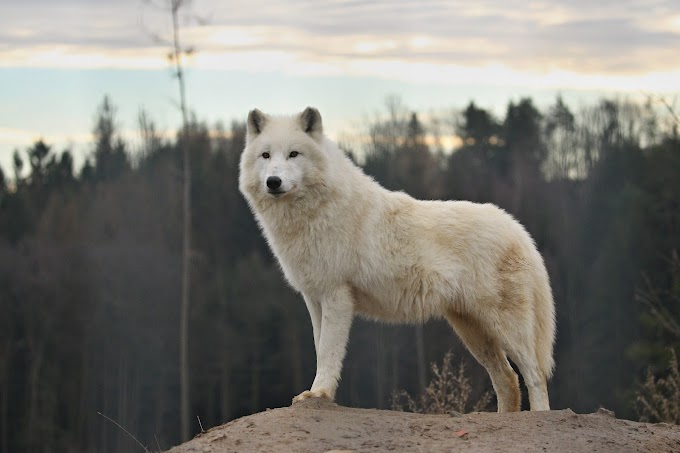The Wolf Apex Predator
It's an beast extensively inhabiting nearly all regions of North America and Eurasia, and is classified as a mammalian canid.
Also known as the argentine wolf In the history, it was frequently called' Wolf' or' Horse Cat', but in ultramodern times, it's nearly always called Wolf. still, in North Korea, according to the Joseon Dynasty Dictionary, it's called' wolf' or' steed cat'. Although this wordbook says seungnyangi and wolf are different, there's a tendency to idiomatically don't distinguish seungnyangi from wolf. According to the North Korean wordbook,' wolf' = ' seungnyangi ' = ' dogseungnyangi'.
Description
body length | 1~1.6m |
shoulder height | 80-85cm |
weight | 30-80 kg (adult male) 23-55 kg (adult female) |
Wolves are the largest and most iconic of the wild doggies. There's a big difference in size depending on the region, and generally, according to Bergman's law, wolves in the northern regions are larger than wolves in the south. Wolves in cold regions of Russia and Canada are further than a fairly large canine importing 30 to 60 kg, but in the south, Arabian wolves and Indian wolves are veritably suppressed at 20 kg. On average, the northwestern wolf of western North America is the largest, importing further than 50 kg on average, and individualities importing 79 kg have been reported. The largest wolf ever linked was a Eurasian wolf killed in Ukraine importing 86 kg. There are unofficial records of wolves importing as much as 96 kg, but none have been verified.
Compared to tykes , Great Danes are on average similar to wolves in numerous felicitations, including length and weight. Slightly larger than, the Saint Bernard tends to be lower in length and height, but weighs more. In other words, a large wolf is analogous in size to a super-large canine. In fact, types of tykes made to fight wolves ( similar as the Irish Wolfhounds) are relatively large. still, since wolves also vary greatly in size depending on the region where they live, it's pointless to lump them together in this way. The body is narrow and elongated, and the legs are long, so they're relatively altitudinous compared to their size and have a long body length. Especially, wolves living in the north have thick fur to escape the cold wave, so they look much bigger than they actually are.
The extermination trouble position is Least Concern, which means that there's nearly no concern as it's the smallest endangerment position to which humans belong. still, the situation in individual territories, rather than as a whole, is slightly different, and numerous areas are at threat of fading. For illustration, in Korea, wolves are designated as a first- class risked species by the Ministry of Environment and are nearly defunct. In numerous countries where wolves live, wolves are defended by designating public premisesand cracking down on coddling. As long as they're well defended, their number is increased veritably snappily, because the relief of generations takes place veritably snappily rather of a short lifetime.
In neolithic times, mashed creatures similar as deer and bison were liked and hunted in herds, so the exertion areas and ecological status fully lapped with humans, and until humans erected a high- position scientific civilization, they contended on an equal footing. also maintained What both species have in common is the specific of forming a group by moving in packs and the specific of stalking while continuously chasing prey. Insub-Saharan Africa, spotted hyenas and African wild tykes play nearly the same part as wolves in the northern semicircle, and slapdash tykes live as wild tykes no different from wolves in some areas of metropolises and private houses. It's a mammal belonging to the canine family of the order Carnivora. In taxonomy, inheritable differences are so small that it's classified as the same species as tykes , so it's possible to copulate and reproduce with each other.
Subspecies of gray wolf
※† indicates endangered species
Eurasia, Australia
- Tundra Wolf
- Arabian Wolf
- Caspian Sea Wolf
- A wolf
- Dingo
- dog
- Himalayan wolf
- Eurasian wolf
- Italian wolf
- Iberian wolf
- Indian wolf
North America
- Arctic wolf
- Mexican wolf
- British Columbia Wolf
- Vancouver Island Wolf
- Hudson's Bay Wolf
- Northern Rocky Mountain Wolf
- Labrador Wolf
- Alexander archipelago wolf
- Eastern wolf
- Mackenzie River Wolf
- Northwest Wolf
- Greenland wolf
- Alaska Inland Wolf
- red wolf
- Alaskan tundra wolf
Extinct group
- † Kenai Peninsula Wolf
- † Newfoundland wolf
- † Banks Island Wolf
- † Sicilian Wolf
- † Florida black wolf
- † Cascade mountain wolf
- † Mississippi Valley Wolf
- † Manitoba wolf
- † Hokkaido wolf
- † Japanese wolf
- † Mogollonian wolf
- † Texas wolf
- † Great Plains Wolf
- † Southern Rocky Mountain Wolf







0 Comments
Please do not enter any spam in the comment box.
Emoji